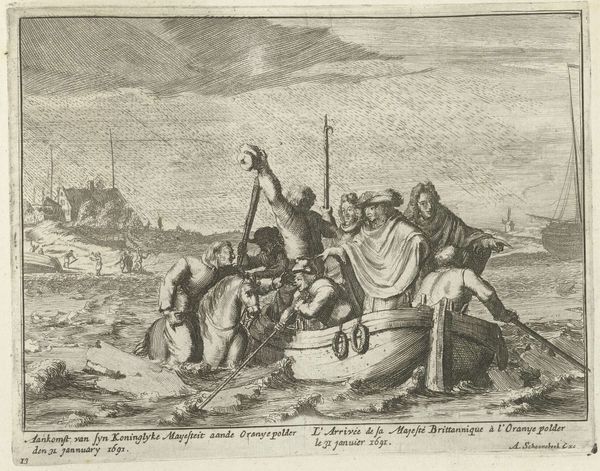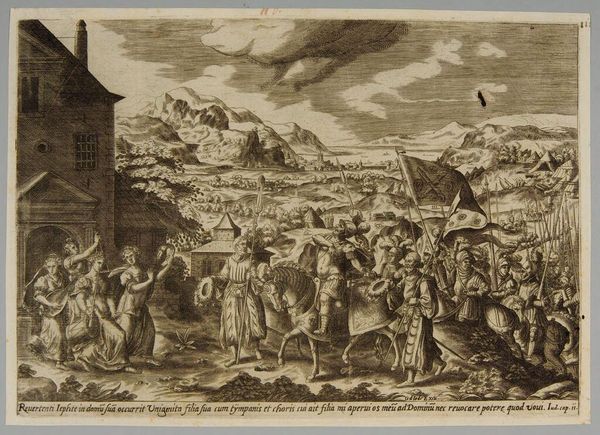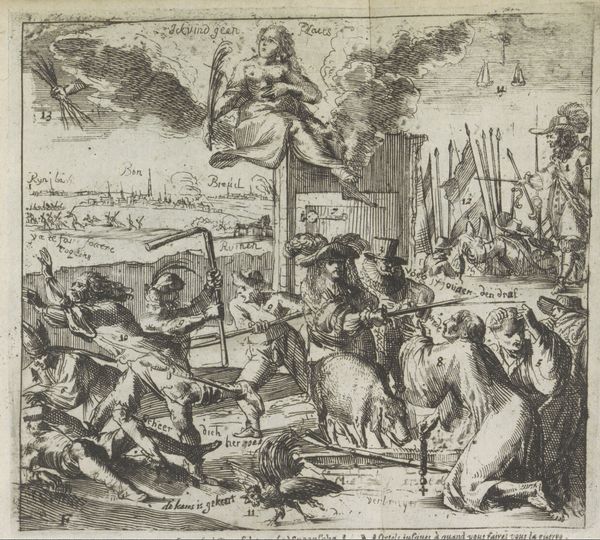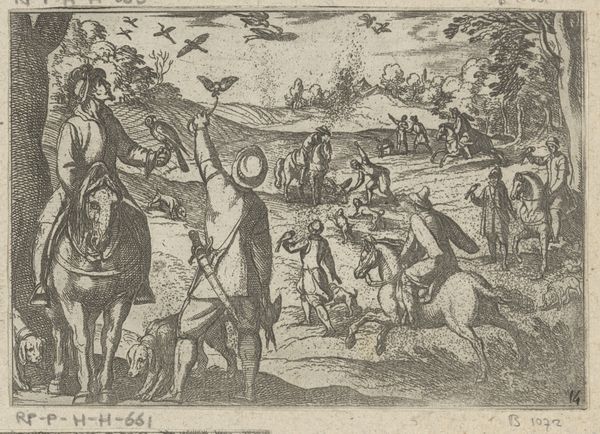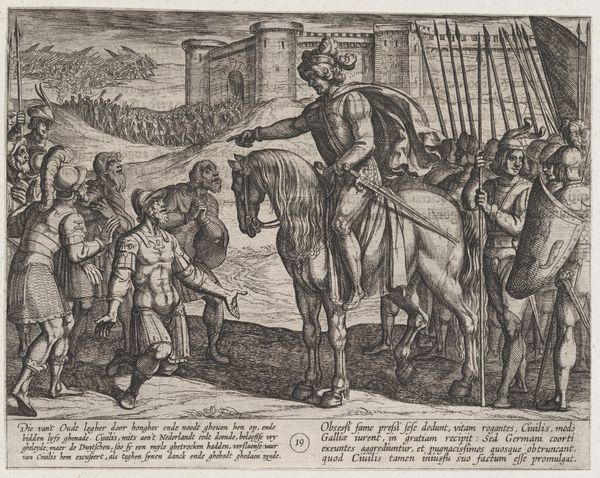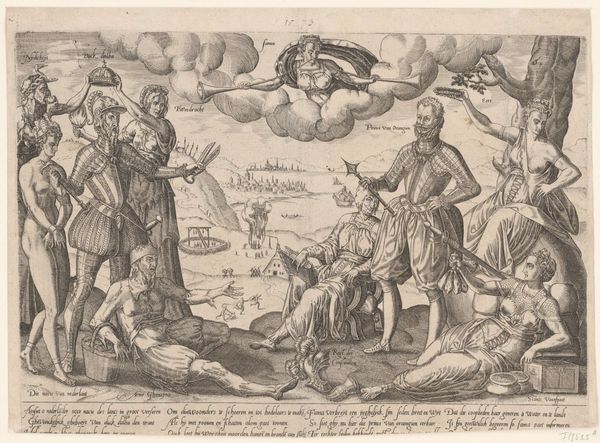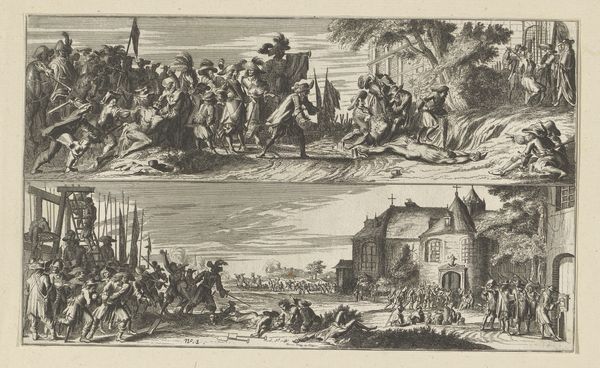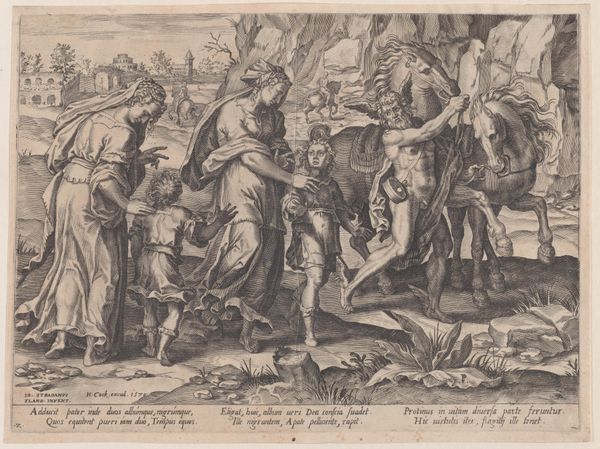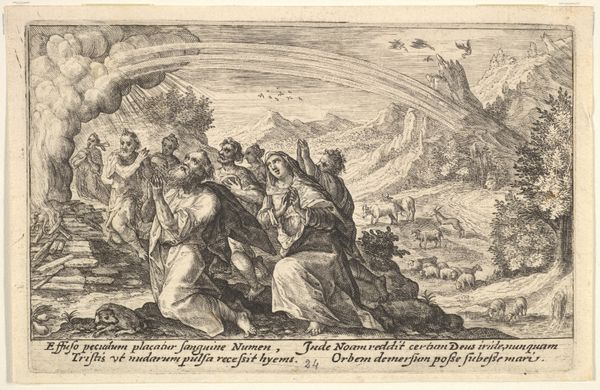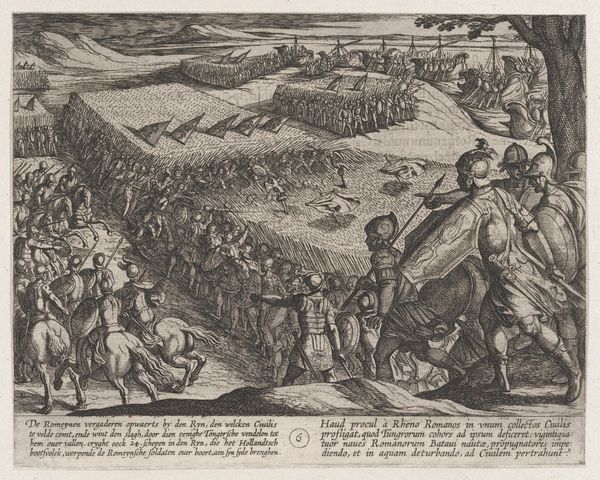
drawing, print, etching, ink
#
drawing
#
ink drawing
#
narrative-art
#
baroque
#
dutch-golden-age
# print
#
pen sketch
#
etching
#
landscape
#
ink
#
history-painting
Dimensions: height 185 mm, width 185 mm
Copyright: Rijks Museum: Open Domain
Curator: Today, we're observing an etching, “De ongeneeselijke ziekte, 1673,” which translates to "The Incurable Disease, 1673." It’s a narrative print from an anonymous Dutch Golden Age artist currently held at the Rijksmuseum. Editor: There's such an evocative sadness hanging in the air of this scene, even through the detailed lines of the etching! The mood is somber—are those afflicted, looking on? Curator: Precisely. Notice how the scene unfolds. It’s composed on a map; you have the Dutch landscape being literally consumed by disease, symbolized by figures who are pointing accusingly. Editor: The landscape itself acting as a material, almost textile surface for national trauma, that’s heavy! What decisions informed using the map in this way? It seems deliberate to use such an authoritative tool against itself, turning cartography into a document of failing. Curator: Maps then, like now, represented control, knowledge, possession. Turning it into a canvas for a ‘disease’ suggests a societal ill, perhaps a critique of political or social structures. Its execution, with meticulous line work in ink, feels reminiscent of period medical illustrations of dissections, laying bare the anatomy of the Netherlands itself. The artist is exposing the vulnerable innards of power! Editor: That precision with ink and pen reminds us this isn't just artistic fancy; it is painstakingly made. It becomes less about detached artistic genius and more about slow, laborious effort—etching and printing would make it repeatable, designed to circulate broadly. Curator: You’re right! Its purpose probably lies in social commentary, produced and reproduced for dissemination, and encouraging dialogue. It asks: What plagues us and who benefits from this 'incurable disease?' Editor: Thinking about how an anonymous artist created it... It reminds you of the power of art to engage with socio-political narratives, even if the "artist" here is a skilled craftsperson operating a printing press. This isn’t high art made in a studio – it’s from the street! Curator: The print is more than a historical document. It's a looking glass into the worries of the time. Editor: Ultimately it calls us to consider how societies both name and visually reckon with crises still today. The ‘incurable disease’ echoes anxieties of our own time, making us ponder: What maps are we drawing now to portray present vulnerabilities?
Comments
No comments
Be the first to comment and join the conversation on the ultimate creative platform.
